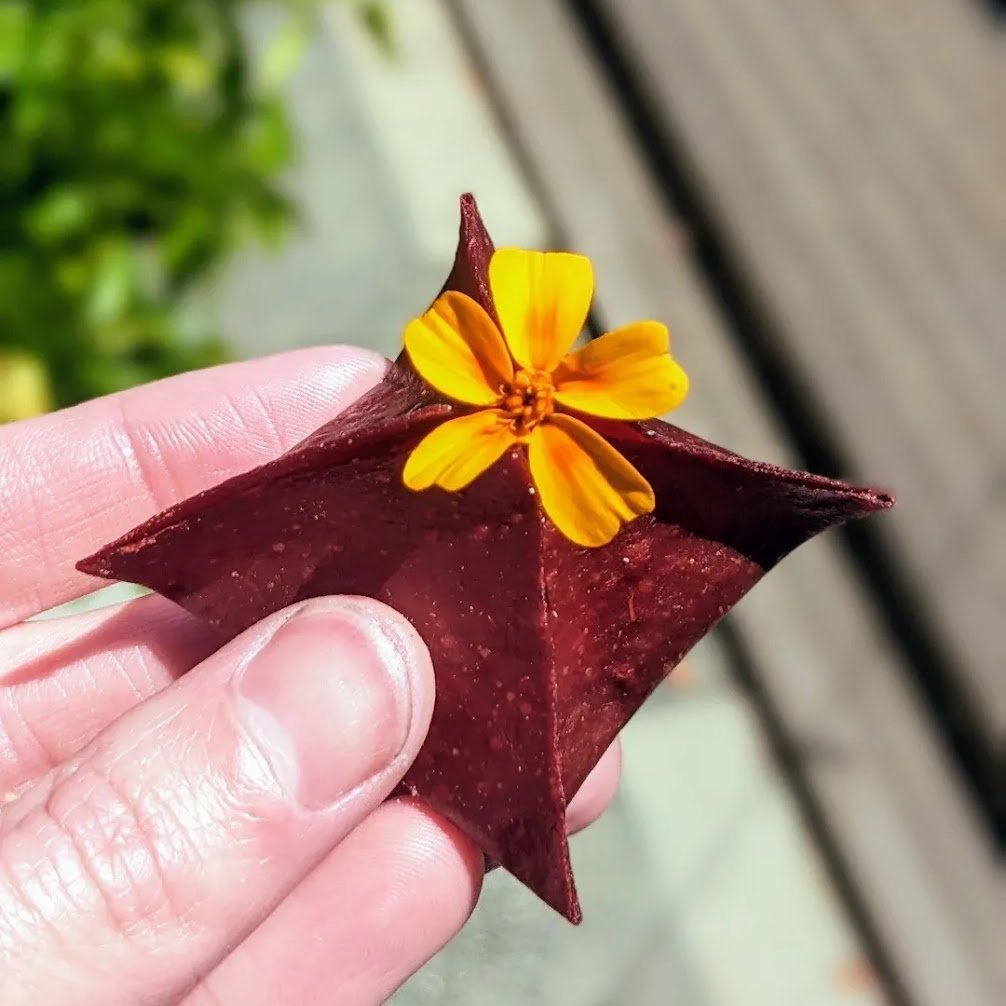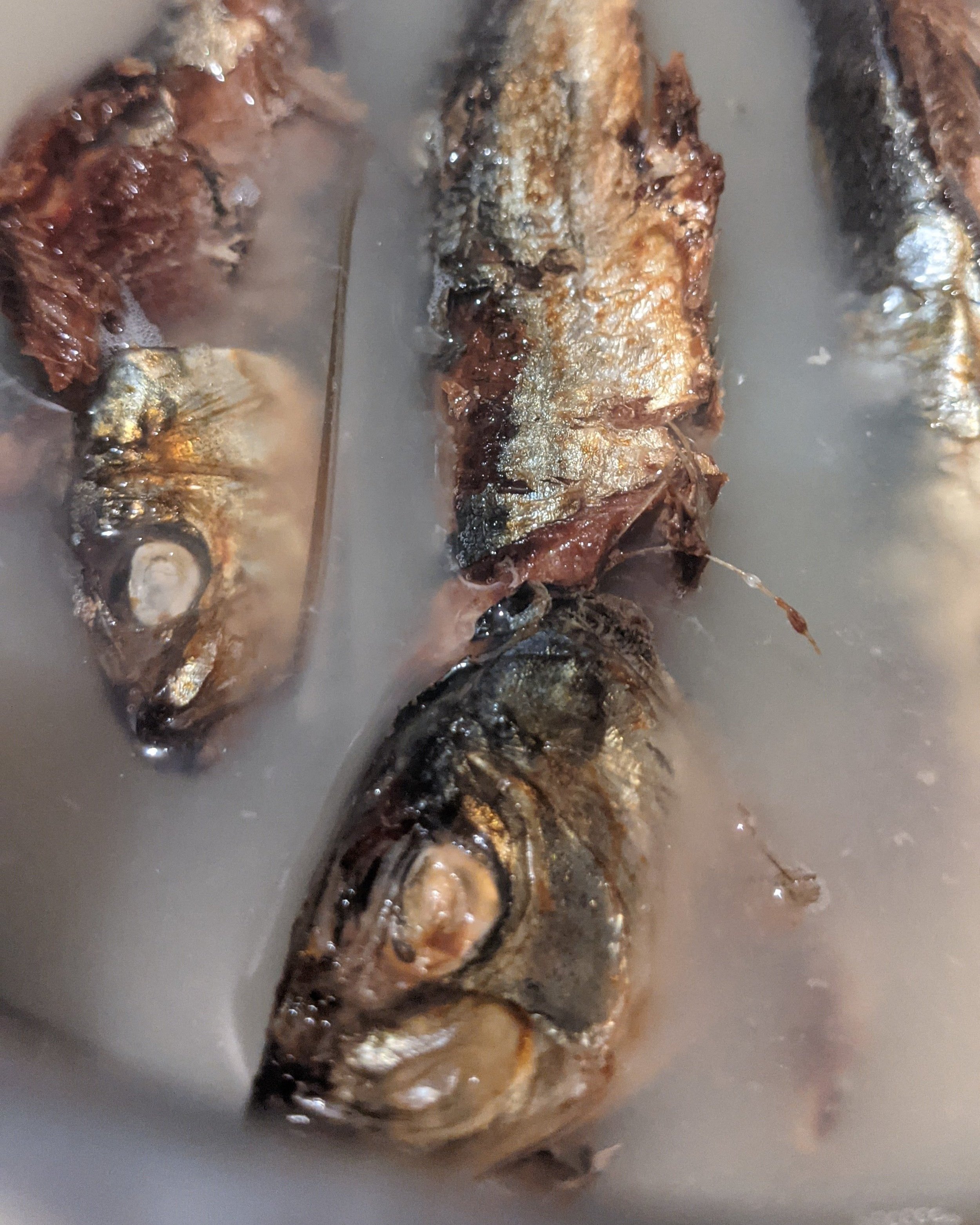Cooking Gear Obsession: Dehydrators
Somehow, against all odds, my dehydrator was
the cooking tool I used most in 2022. 2022 is also a year where I improved dramatically as a cook, and I owe a great deal of that improvement a few of my dehydrator’s tricks.
In this post, I catalog exactly why I found myself using my dehydrator more than anything else in my kitchen.
I’m someone who has a lot of kitchen gear. At this point, it’s clearly a problem.
Most of my cooking gadgets have a honeymoon phase followed by an abrupt divorce. I’ll get a new device, cook everything with it, lose the enthusiasm after a few weeks, then let it collect dust in the garage from that point forward. I’m sorry, Ooni — it was me, not you.
But my dehydrator is different. I’m always using my dehydrator. And as the years have gone by, I’ve only increased how often I use it and how many things I use it for. You could call us a perfect match.
I’m writing this post because I think dehydrators get a bad rap. If I’m not making my own spices and beef jerky, what’s the point? Truth is, the dehydrator is my preferred tool for so many routine tasks that I’d go so far to say that dehydrators are essential for ambitious home cooks.
Below, I describe some of my favorite (often atypical) dehydrator uses. Please comment below if you use yours for something else!
How I use my dehydrator
First off, a disclaimer. I use an Excalibur 5-tray dehydrator. I got an Excalibur because it’s the preferred choice of restaurants I’ve spoken with, it uses standard square trays for which you can get awesome accessories (like these and these), it doesn’t turn off automatically after prolonged use, and it’s durable AF. Admittedly, now I wish I got a 9-tray.
Could you do some of the below tasks with other dehydrators? I’m sure of it — but it’s possible you might struggle to achieve the same results. For example, these silicone trays aren’t for sale for round dehydrators, and they’re essential for my tomato paper recipe. So heads up in case you buy a different dehydrator to do this stuff!
Now let’s take a look at ten atypical ways I use my dehydrator.
1. SAVORY FRUIT LEATHERS
Yes, you’re aware you can make fruit roll-ups with a dehydrator. It’s surprisingly simple: blend some fruit with sugar, spread it on a non-stick mat, and wait. But you can also make savory fruit leathers that are amazing bursts of flavor for certain dishes.
Tomato paper filled with squid, shiso, citrus marigold, and vinegar gel
I use my dehydrator to make tomato wonton skins for my pistachio clam shio ramen. The tomato wonton skin taste is akin to an intense pizza sauce, and I fill it with a pistachio and lemon puree. Here’s the recipe.
I also use my dehydrator to create what I call tomato “paper” — a flimsy film made from tomato water that I use to serve a squid ceviche appetizer. I’ve repeated this technique with fig leaf water, cucumber juice, beet juice, etc. I’ll post this recipe here soon.
I also like to make plum fruit leathers that I dress in ferments and other goodies (like the clam salt described in the next section). I make the plum leather with the liquid that’s leaks from frozen then poached black plums, just the most intense part of the plum juice.
When you dehydrate certain fruit leathers for an extra day, you can create a crispy fruit “glass” instead of leather. You can even do this in the shape of a tart shell. To do this, add 10-30% of the main ingredient’s weight in sugar (for something sweet) or isomalt (for something savory) then dehydrate at 140ºF for at least a day. Isomalt has the melting properties of sugar but isn’t nearly as sweet.
2. SAVORY Salts
Some of the most intense salts I use don’t use salt as an ingredient. Instead, they are naturally salty foods that are dehydrated into a solid then blended with a spice grinder into a powder.
Poached plum juice leather topped with preserves and clam salt
Kelp salt is an ingredient I learned about from the Noma 2.0 cookbook. Unlike moshio, the umami-rich salt made from dehydrating kelp and seawater, kelp salt is made by dehydrating kelp dashi until it’s just the extracted salts (and other stuff). The flavor is like a roasted seaside caramel — not at all like the kelp itself. Goes great as a dash on raw seafood or as the salt for a savory fruit leather.
Inspired by the “mussel licorice” grated onto certain dishes at Kadeau, I also used my dehydrator to make "clam salt”. My clam salt is like clam-flavored spice that you can microplane in small doses as a salt alternative. I have no idea how Kadeau in Copenhagen makes their mussel licorice, but to make my clam salt, I used my dehydrator. Here’s the recipe.
3. Low temp reductions
Certain reductions are best reduced at really low temperatures, and the dehydrator is perfect for this. Unlike reducing over the stove, the dehydrator is far more precise at lower temperatures. And unlike the oven, the dehydrator is moderately energy efficient.
For example, I use my dehydrator to reduce chicken stock for use in demi-glace, because doing so ensures that any fats in the stock won’t emulsify (which would prevent my stock from being crystal clear). You just gotta make sure that the temperature of the stock is around 140ºF or higher while reducing to keep it out of the temperature danger zone.
4. Semi-drying fruits
Fruits (especially fermented ones) work surprisingly well in savory dishes when they’re semi-dried.
Just as sun-drying tomatoes intensifies them in a way that imparts a new flavor with added depth, semi-drying plums, apricots, and other fruits unlocks new potential from fruits. Semi-drying strawberries even naturally hollows out the inside, creating a little bite-sized pocket for you to fill with other ingredients. And semi-drying fermented ingredients (like with my strawberry flavor-bombs recipe) brings back their natural sweetness. You can even add them back to the fermented brine after dehydrating and the sweetness boost is retained.
I semi-dry tomatoes, too — but not like sun-dried tomato style. I peel cherry tomatoes before semi-drying them to add to my pistachio beurre blanc recipe, and I peel and core giant heirloom tomatoes to serve as tomato chashu for my chilled tomato ramen.
Peeled roma tomato brushed in koji oil then semidried before stuffing it with deep-fried kombu and fermented strawberries
To semi-dry fruits, you just slice them in half and dehydrate them a low temperature (120ºF) for 4-8 hours. I use a mat like this to dehydrate to keep things from sticking. For plums and other fruits with impenetrable skins, you should either remove the skin or puncture a bunch of holes in it. Semi-dried fruits last a few days in the fridge in an airtight container.
With tomatoes and many other fruits, brushing the fruit with oil helps for more even cooking and a more pleasant chew. You can marinate them in oil prior to serving too revive the texture a bit too. I brush my tomato chashu in kombu oil to really up the umami.
This steak was cooked with a dehydrator then seared
5. Making steak
The dehydrator is sort of like the ultimate reverse-sear device. After two hours in the dehydrator at 140ºF, your steaks will be ~100F with zero moisture on the surface, making it a cinch to give them a hard sear with medium-rare results. I posted the recipe for this here.
6. SPICES WITH ACID OR UMAMI
Why are nearly all spices just dried herbs? Don’t get me wrong — I’ve dried my fair share of herbs! I dry homegrown woodruff because it concentrates the vanilla-like flavor to use for desserts. But my favorite spices are sour or savory, and they’re only possible with the dehydrator.
For example, I love to dry fermented vegetables to use as an acidic salt for seafood. Check out my recipe on fermented paprika, which is made from the discards from my koji hot sauce recipe. In the Noma Guide to Fermentation, they dehydrate and powder fermented plum skins.
I also love to dehydrate the leftover solids from quick garum production. I have a container of leftover solids from chicken fond garum that I mixed with salt and use as an umami-rich chicken seasoning. It’s awesome.
7. Soup aromatics
Smoked then dehydrated night smelt infusing unfiltered sake for ramen tare
Unsurprisingly, dehydrated stuff makes great soup. Just as dried bonito makes for a potent dashi in the form of bonito flakes or katsuobushi, dried food scraps can turn up the volume on your next soup.
For example, you might have tried adding ginger to soup, only to find that the raw bite of ginger is nowhere to be found in the final product. If you thinly slice the ginger, dehydrate it, then add the dehydrated ginger to your soup in the final hour of cooking, you’ll produce a soup that has the same spiciness as raw ginger. It’s powerful!
I also dehydrate oysters (the meaty, inexpensive ones that come in a can at my local fishmonger) to infuse my latest ramen broth tests, and I dehydrate spare sliced sardines to make homemade katsuobushi of sorts.
8. Black ingredients
I’m sure you’ve heard of black garlic — the subtle and sweet, anise-flavored product made by slowly cooking garlic until it turns black. I often buy mine because its readily available, but the same can’t be said of other black ingredients such as black apples, shallots, hazelnuts, etc.
Making black ingredients is simple with a dehydrator. Wrap or seal the food to ensure it doesn’t dry out, then cook it for a month at 140ºF. One of the reasons I love the Excalibur is because it doesn’t turn off after a few days like most cheaper dehydrators.
9. Preserving things
As you know, dehydrators can be used to preserve fruits (like dried apricots and persimmons), herbs (as spices), and meat (as jerky).
If I’m not using my koji right away, I dehydrate it for later.
But more relevant for my fermentation-centric blog is that you can also use dehydrators to fully dry koji at a low temperature, which allows you to use it as an aromatic or for miso, koji oil, etc. at a later date. The low temperature is key for ensuring that the enzymes in the koji are not denatured (so that they can continue to create umami in your food). Ovens usually operate at too high a temperature to ensure you’re not destroying the enzymes in koji.
10. Keeping things crisp
When I’m making something that is very sensitive to moisture, I prefer to store it in the dehydrator before it’s time to serve. For example, I make impossibly-thin tart shells out of oven-baken wonton wrappers, and these lose their crisp in less than an hour if their not kept prior to service in a moisture-free environment like a dehydrator.
Each of these courses are made with a dehydrator. From left: the skewer uses fermented and dehydrated strawberries, the tomato paper wonton is made from dehydrated tomato water, and the tart uses both dehydrated plums and a tart shell that must be kept in the dehydrator until ready to serve.







